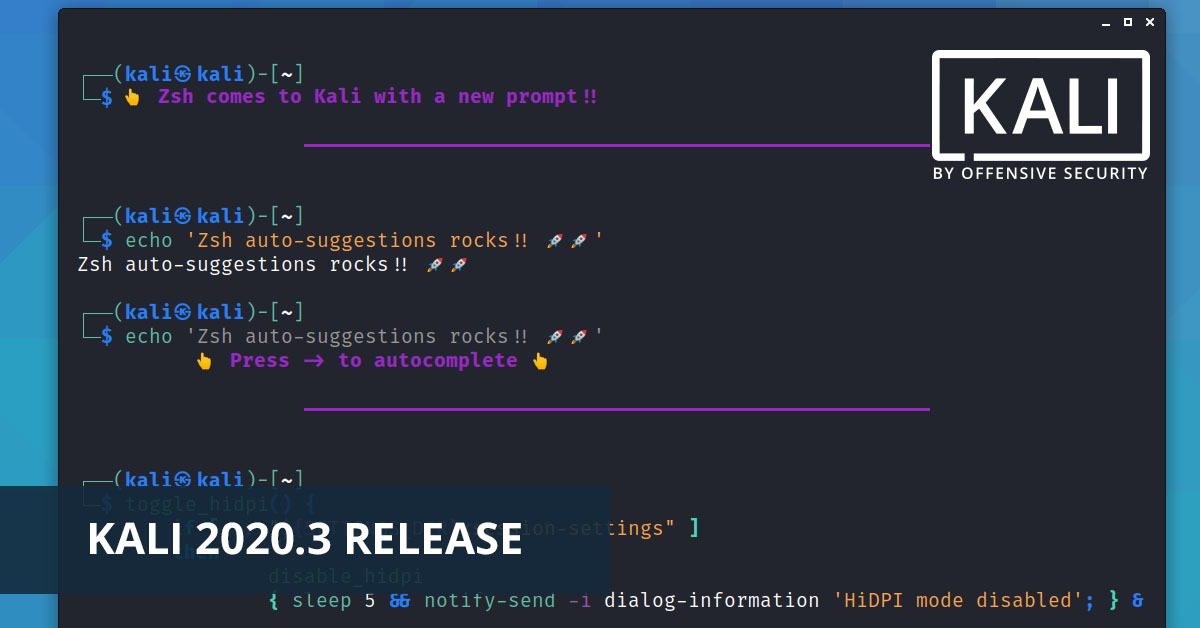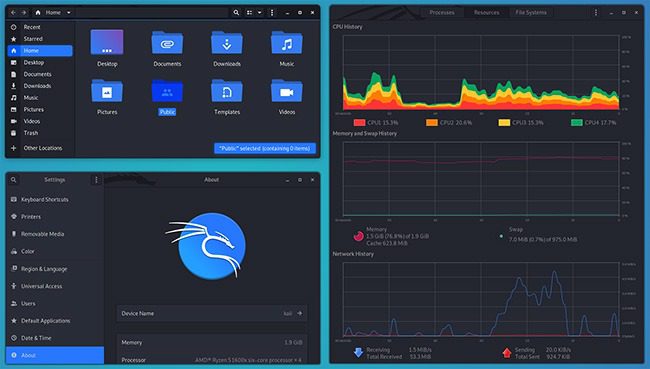Offensive Security has released Kali Linux 2020.3, the latest iteration of the popular open source penetration testing platform. You can download it or upgrade to it.
Kali Linux 2020.3 changes
New features include:
- Kali NetHunter – Kali’s mobile pentesting platform/app – has been augmented with Bluetooth Arsenal, which combines a set of Bluetooth tools in the app with pre-configured workflows and use cases. “You can use your external adapter for reconnaissance, spoofing, listening to and injecting audio into various devices, including speakers, headsets, watches, or even cars,” Offensive Security explained
- Kali NetHunter now also supports Nokia 3.1 and Nokia 6.1 phones
- The team has pre-generated 19 ARM images (“alternate flavors” of Kali for different ARM hardware) but has also refreshed build-scripts for ARM devices, so that users can quickly self generate images for those devices (39 in total)
- Win-KeX (Windows + Kali Desktop EXperience) provides a persistent-session GUI
There’s also some visual changes/upgrades:
- The design of Kali’s GNOME desktop environment has been improved
- There are new themed icons for tools
- Improved support for HiDPI (High Dots Per Inch) displays
A new default shell in the offing
Last but not least, one big announcement: the company aims to switch bash (aka “Bourne-Again SHell”) with ZSH as Kali’s default shell.
ZSH is based on the same shell as bash, but has additional features and support for plugins and themes.
The switch is scheduled to happen in the next iteration of the distro. In the meantime, users are urged to try it out and offer feedback.
“We hope we have the right balance of design and functionality, but we know these typically don’t get done perfect the first time. And, we don’t want to overload the default shell with too many features, as lower powered devices will then struggle or it may be hard to on the eyes to read,” the company explained.






